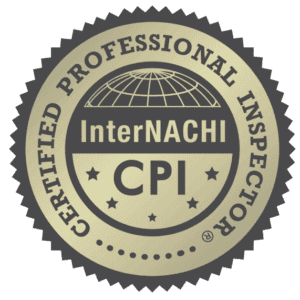Infrared Cameras: Benefits and Limitations
Technology is a beautiful thing. New tech is being created everyday to make us happier, healthier, safer, etc. The one sticking point I have with technological advancements is there is very little understanding of how new tools work as well as their limitations. Sales people are going to sell you on the good and not talk about the pitfalls. With all this in mind I am writing this post to talk about the fanciest piece of tech we carry in our tool bag at Home Inspection Geeks; an Infrared Camera. This is a fabulous piece of equipment, but I also feel like it is misunderstood and slightly oversold by our industry. That is why I am going to break down how it works, the benefits, and also the limitations in the article below.
How Infrared Camera (Thermal Imaging Works):
This article is for the laymen and women, so I am not going to go full geek mode on the science behind this tool as it is complicated, but if you understand how pixels work on a normal camera you should be able to understand the basics of a infrared camera. The camera uses heat signatures from the item you are looking at to detect temperature differences that are a fraction of a degree different between spots in the image. Going back to pixels, it basically takes a temperature reading for each one of the pixel sections to give a clear temperature profile of the object you are aiming at. You can see a sample thermal image in Figure 1 below.

Figure 1 – This is an example of a picture taken with an IR Camera. The blue/purple is colder than yellow. The cold area in this picture is a window.
Why is it useful?
Unlike what your thermostat states, temperature is not uniform across rooms or objects. Technically every atomic space has its own unique temperature value, but we cannot visibly see these temperature differences with our eyes. Using Thermal Imaging to look at a home can uncover issues or items that normally would not be able to be seen by the naked eye. The most common items are listed below and you can see some examples of these in the figures.
- Water leaks or intrusion – The infrared camera picks up the difference in temperature between the water and the wall/member it is being absorbed in to.

Figure 2 – This thermal image shows a shower leak that started to pool water above the first floor ceiling.
- Overheated electrical wires/connections – If too much current is passing through an electrical wire, then the wire will overheat and cause a fire.

Figure 3 – This main lug for an electrical panel got up to over 150 degF. The wire was sized to small.
- Air intrusion/Lack of insulation – The IR camera can see where cold or warm air is entering due to improper sealing. It can also see if insulation is present.

Figure 4 – Air Leakage through an outlet on an exterior wall.
- HVAC ducts that are clogged – The camera can show areas that are restricting proper duct flow.
As you can gather from the list above, finding these types of issues during an inspection can potentially save clients $1000’s of dollars in the future and better protect their real estate investment.
So it can help see through walls?
Thermal imaging is not the same as X-Ray vision. So no, this does not allow your inspector to see through walls. There may even be a circumstance that a wall is wet and not detected by the IR Camera. How is that? Well, the IR Camera senses the heat signature, if the wet wall has had enough time to get to the same temperature as the rest of the wall, the IR Camera won’t pick it up. Additionally, if the outdoor temperature is the same as the indoor temperature (or close enough) it will be hard to pick up insulation gaps as well. Remember, the camera picks up heat signatures not the water or air gap itself.
Other Limitations:
The other main limitation Infrared Cameras have is that surfaces that are reflective (shiny metals) will give false readings. There are ways to compensate for this with more professional grade IR cameras and having someone who is properly trained in the technology is important so they can interpret reflective surfaces appropriately. Lastly, not all IR Cameras are created equal. Lower grade cameras do not offer the resolution of more professional grade cameras and that could be a big difference in what your inspector is able to see. I would recommend making sure your inspector has at least a 10,800 pixel camera or better.
Bottom Line:
Infrared cameras are a great tool for inspecting a home. There is a ton of insight that they can provide and can catch issues that even the most seasoned inspector can’t catch without the technology. Using an inspector who utilizes thermal imaging during an inspection can save you $1000s of dollars and several headaches. It is also important to realize like any technology, it has limitations and it is important to hire someone who has the training to use such equipment for the best results.




